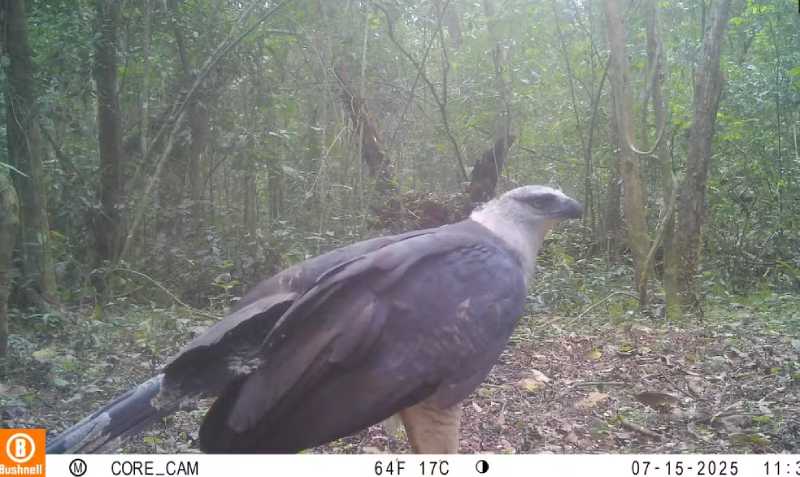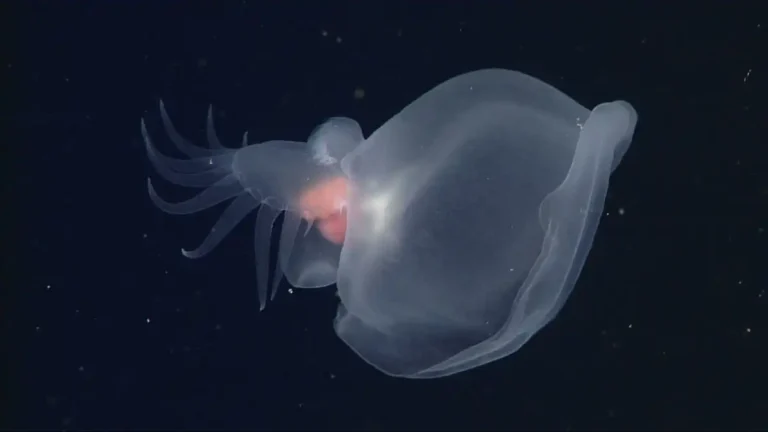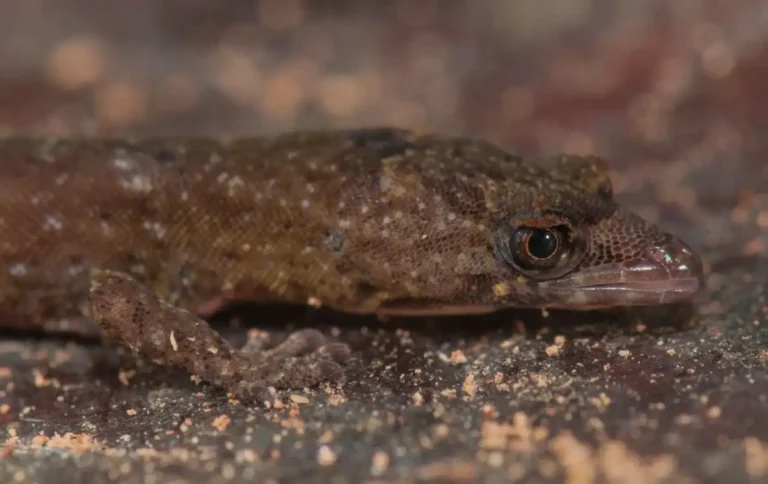Rarest eagle in Brazil filmed for the first time

A historic record has excited the team of the Onças do Iguaçu Project. For the first time, a crested eagle (Morphnus guianensis) was captured on video at Iguaçu National Park, in Paraná, Brazil.
The bird of prey, considered one of the rarest in the Americas and threatened with extinction, was recorded last month by a camera trap set up to monitor local wildlife. According to the project’s technicians, the animal was likely hunting at the time of the footage, which would explain its presence on the ground.
This species, which inhabits dense and relatively undisturbed forests, is extremely difficult to observe. Until now, there had only been a single photographic record in the park, taken in 2022, when the crested eagle was seen preying on an opossum—an unprecedented behavior documented for the species.
According to the project coordinator, Yara Barros, the sighting is an indicator of the park’s environmental quality. “It’s a top predator that requires large, well-preserved areas. Iguaçu National Park remains a safe refuge for wildlife,” she stated.
For Tânia Sanaiotti, coordinator of the Harpy Eagle Project in Brazil, who has been studying crested eagles for 28 years, the record is remarkable. “The distance between this second record of an adult crested eagle and the first one in 2022 shows that there is more than one pair in Iguaçu National Park, which apparently sustains a stable population of the species.”
“The occurrence of the crested eagle Morphnus guianensis in Iguaçu National Park is a very important fact for ornithology in the state of Paraná. The species inhabits dense, well-preserved forests and is extremely difficult to spot due to its habit of remaining hidden in the forest,” said Pedro Scherer Neto, one of the most respected ornithologists in the country.
Iguaçu National Park, recognized as a UNESCO World Natural Heritage site, shelters one of the largest remnants of the Atlantic Forest in Brazil, in addition to the famous waterfalls. This new record reinforces the importance of protecting the park to ensure the survival of rare species such as the crested eagle.
The crested eagle (Morphnus guianensis) is also known in Brazil as uiraçu-falso, false harpy, or false harpy eagle. These nicknames are linked to the species’ strong resemblance to the harpy eagle (Harpia harpyja), the largest eagle in Brazil.
/i.s3.glbimg.com/v1/AUTH_59edd422c0c84a879bd37670ae4f538a/internal_photos/bs/2025/m/C/kB7cKIQHa2q6OMq3BBqQ/diferenca-uiracu-e-harpia.jpg)
Despite these nicknames, there is nothing “false” about the crested eagle. In fact, the species is striking in its own right, ranking as the second-largest eagle in Brazil and considered even rarer and harder to spot in the wild. But after all, how can one tell the two species apart?
Smaller than the “queen of the forests,” the harpy eagle, the crested eagle can display three types of plumage: light morph, dark morph, and extreme dark morph. Confusion between the species usually occurs with individuals that have lighter feathers, but even then, there are clear differences.
The main distinguishing feature is that the crested eagle has a single elongated feather on top of its head, while the harpy eagle sports a divided crest. In addition, the crested eagle’s legs are thinner and longer. Around the eyes, the crested eagle shows a black mask that extends into a thin stripe running close to the eyes.
The harpy eagle’s feathers are much more sharply contrasted, with a gray head, dark plumage on the chest, and a whitish belly. These characteristics do not apply in the same way to the crested eagle.
/i.s3.glbimg.com/v1/AUTH_59edd422c0c84a879bd37670ae4f538a/internal_photos/bs/2025/a/j/BVn1JlS0us9oKhlxE6eg/variacoes-plumagem-uiracu-arte.jpg)






